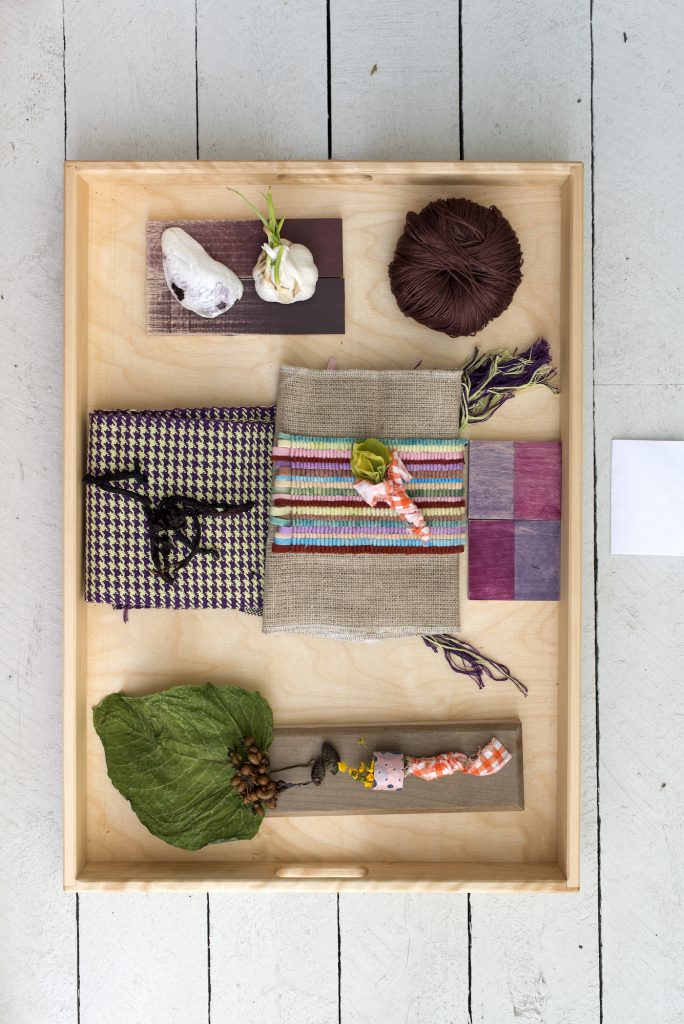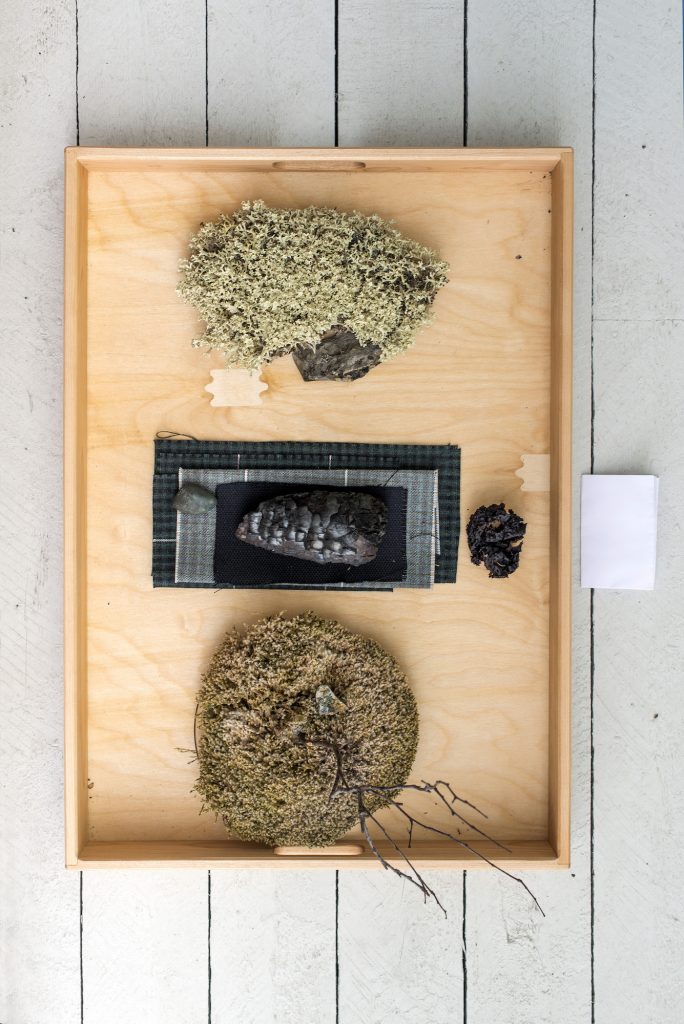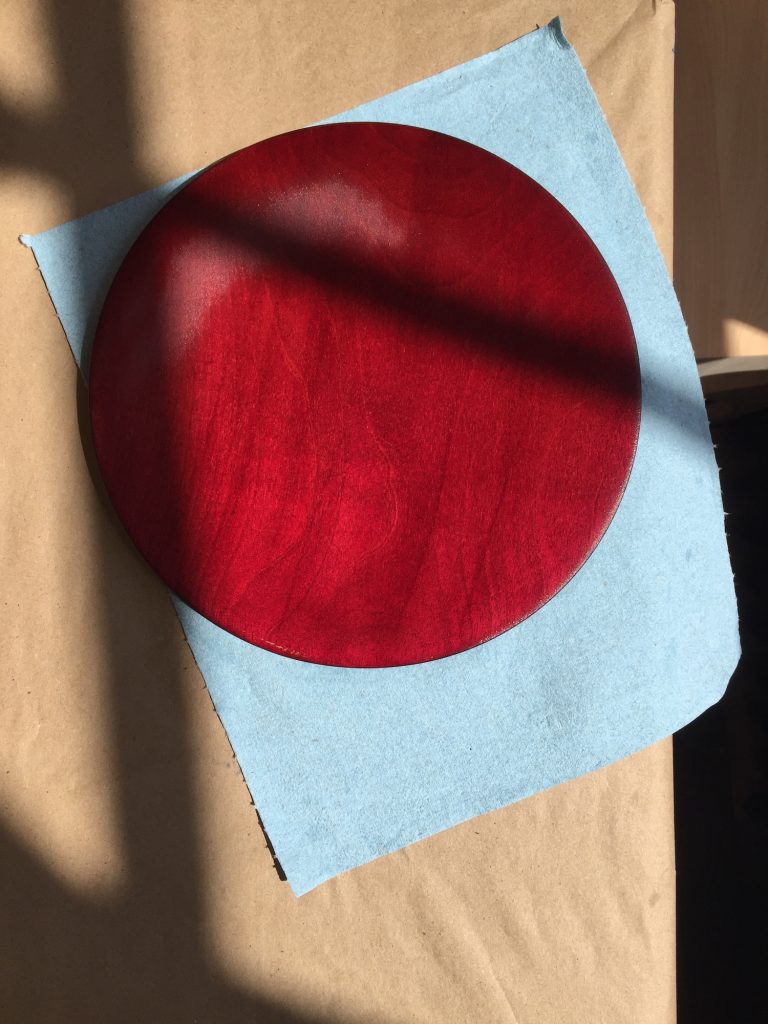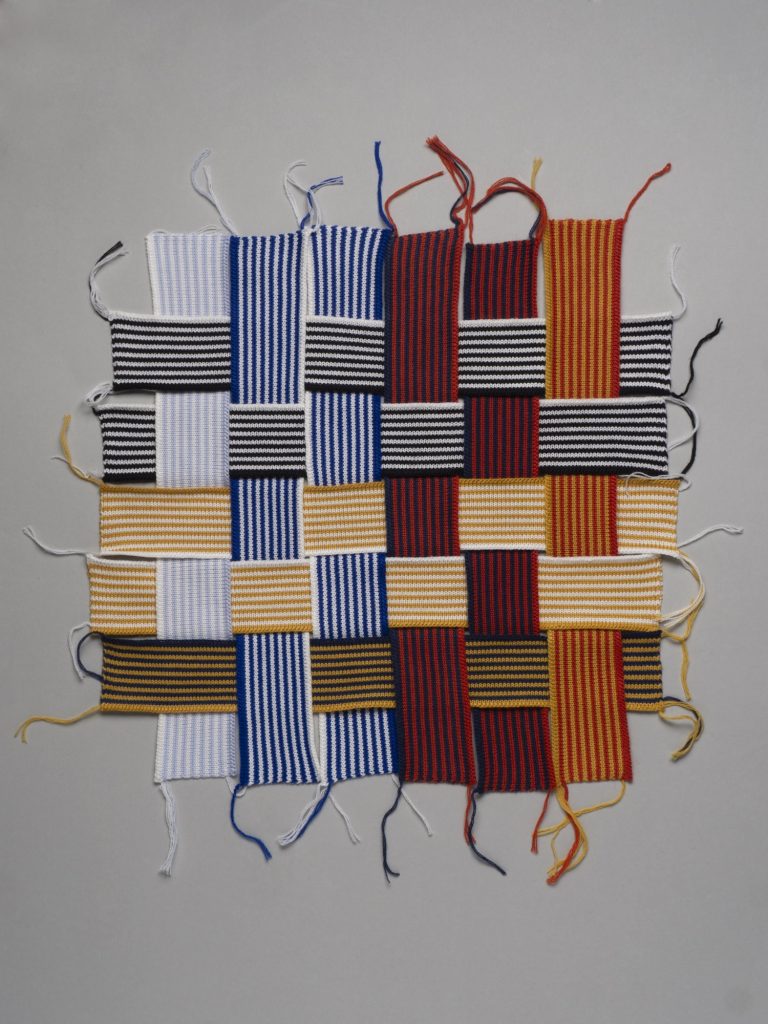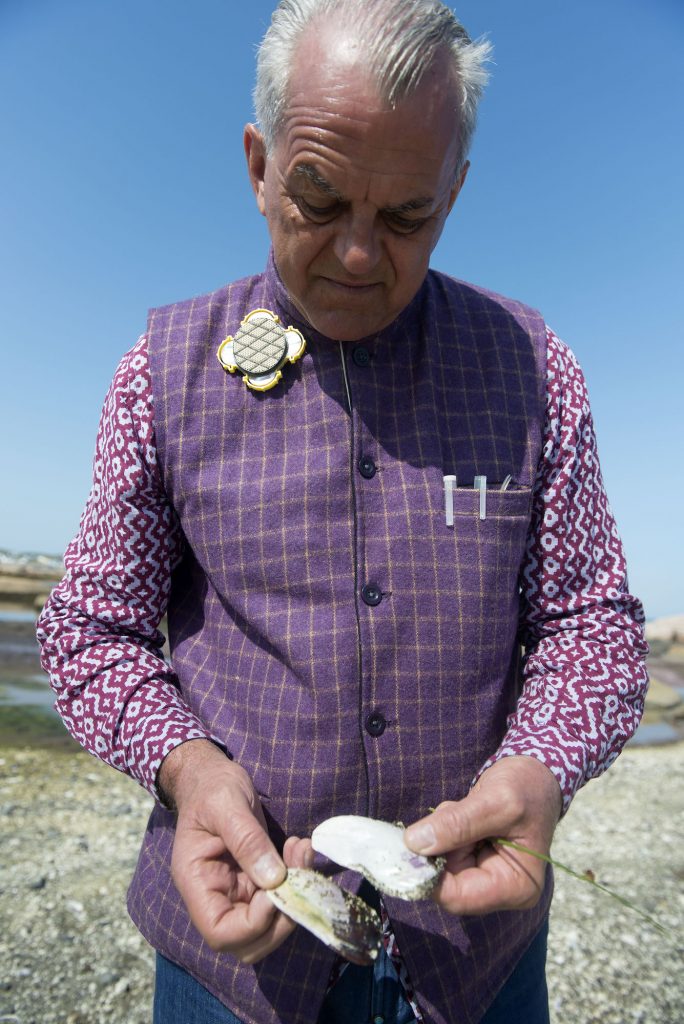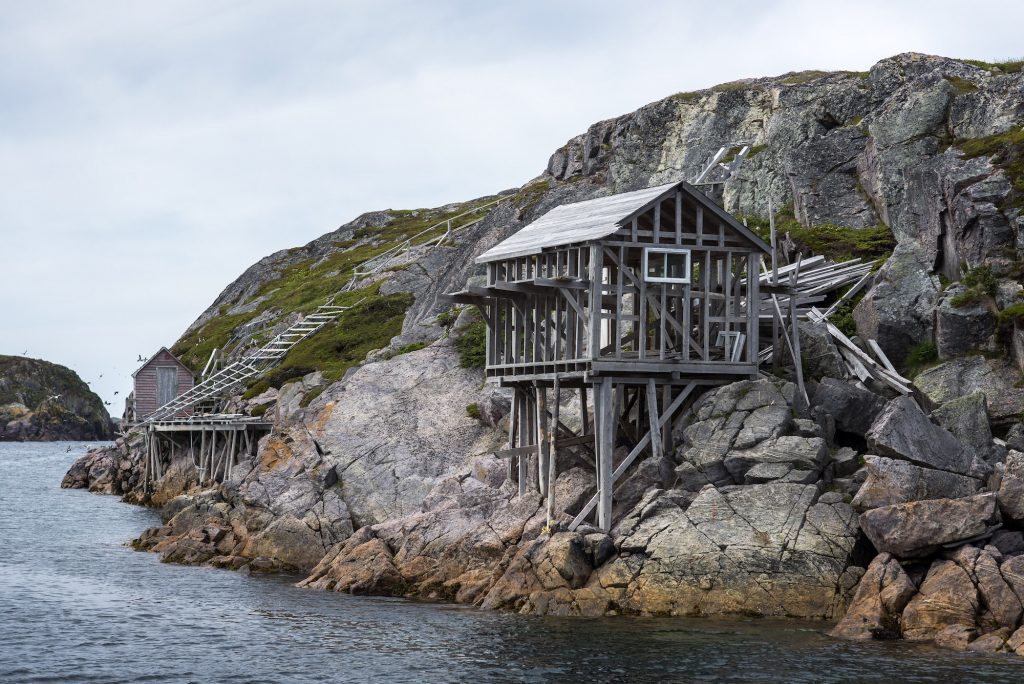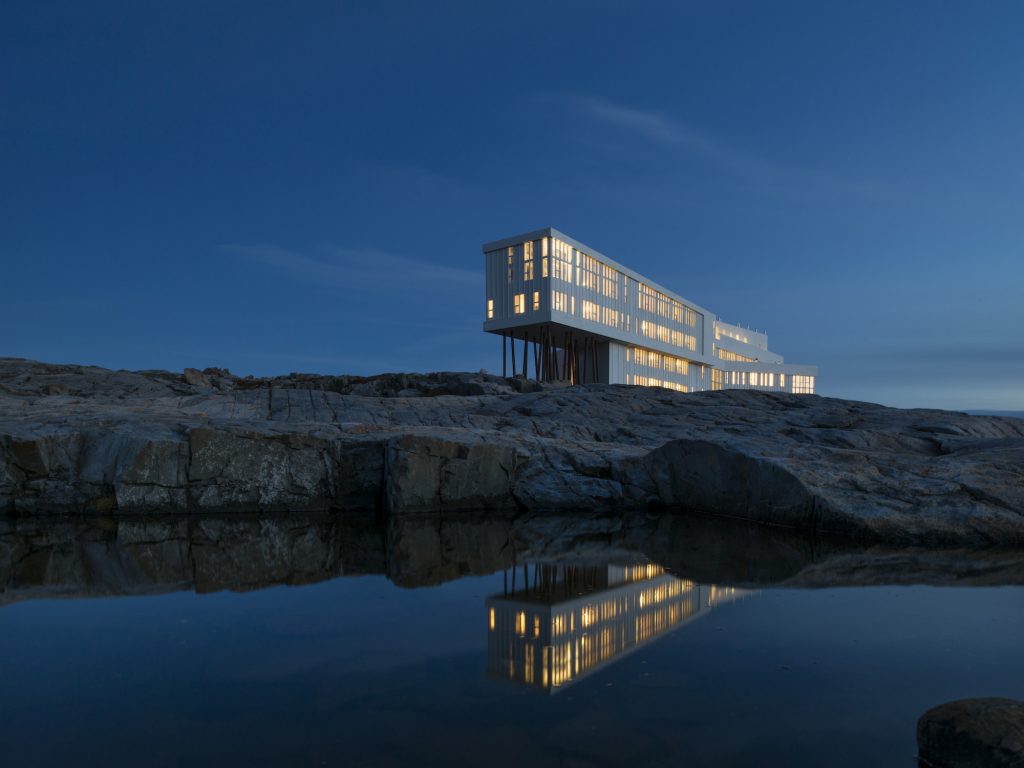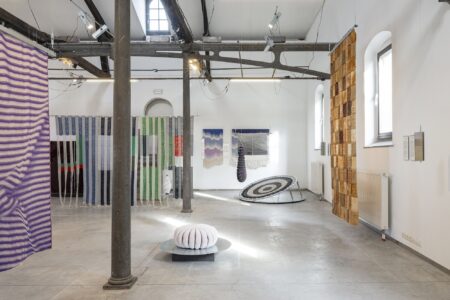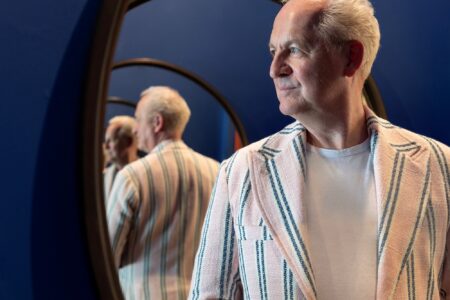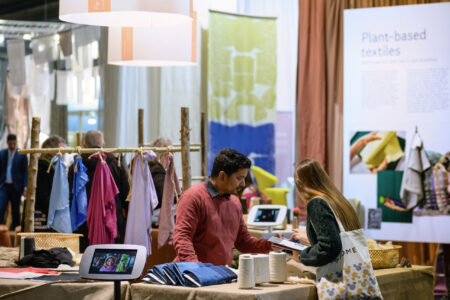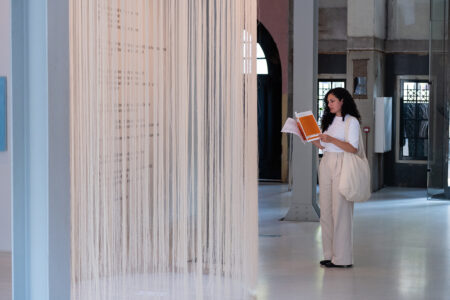Far Away from Far Away: Giulio Ridolfo
In 2019, colour advisor Giulio Ridolfo visited the remote Fogo Island where he created a bespoke colour chart and a collection of knitted accessories for the new Fogo Island Workshop brand. Anniina Koivu, guest editor of TLmag35: Tactile / Textile / Texture, wrote about this experience for our S/S 2021 issue.
“I trust my eye,” says colour expert and designer Giulio Ridolfo.
Said to “live colour,” Giulio is a sought-after colour advisor to many of the world’s leading interior, product design and footwear companies. Famous brands like Kvadrat, Moroso and Tod’s come to him to pick just the right shade for the right product – not least, because he enjoys colour, and knows which colours, placed where, will bring joy.
Moving freely among flaneur and observer, artist, alchemist and designer, Giulio masterfully translates landscapes, objects and emotions into colour. He does so with great lightness, intuitively, almost miraculously, yet through a very hands-on approach. “There is history, knowledge, little tricks one can learn. The rest is attitude and a bit of taste,” as he modestly puts it.
First, he strolls and observes. His method is that of a photographer who looks through a wide-angle lens, searching for different panoramic views. But instead of trying to capture this panorama in a photograph, Giulio absorbs its colour compositions. Then, using found objects – a pebble, a maroon-red, insect-eating pitcher plant, an old cast-iron teapot, a wooden bowl of blueberries, some lime-green candy-wrapper – he recreates the real-life geographic panorama in the form of a collage.
Once the collage is assembled, he looks for the harmony that exists between the individual colours, and makes sure they correspond with the scenery they evoke. Once he is satisfied with a colour collage, Giulio then in-troduces science into his working method: in the form of the spectrophotometer. This colour scanner screens the still-life’s tones, then translates them into exact numeric codes: cyan, magenta, yellow and black (CMYK).
Next, the designer uses his expertise to manoeuvre his way through the various codes to fine-tune the different shades. Finally, he arrives at a selection of colours. When used in, for example, a sofa’s upholstery, these colours will start to resonate, reminding us – subconsciously – of the first scene encountered in the landscape.
Invited to Fogo island, off the Newfoundland coast – a place so remote, in fact, that it is said to be “far away from far away” – Giulio spent a summer month in 2019 doing just this. He visited Fogo’s communities, strolling through low-growing birch and juniper woods, bogs and barrens and open landscape.
All the while, the designer’s eyes wandered the rocky coastline of an island that has been shaped by the unforgiving North Atlantic sea. Tossing stones, picking up sun-dried seaweed, spotting pieces of salt-worn nylon fishing nets, a seagull’s meal, a faded orange crab shell, the carbonized birch wood left-over from a campfire: on these walks, Guilio slowly assembled the unique objects that represent this unequalled place and its colours.
The result of his stay were four colour tableaus: Fogo summer, 2019. The purpose: the creation of a colour chart and a collection of knitted accessories for the new Fogo Island Workshop brand.
For centuries, Fogo Island has been a fishing outport, populated by settlers from England and Ireland who started arriving in the 1700s. Life was hard but simple. People sustained themselves with what the sea could offer, and traded their catches for basic goods like flour and tools. But by the 1960s, with the arrival of overseas fishing armadas and the subsequent vanishing of cod fish, the local fishing industry declined drastically. Fogo Island, like so many of the remote places around the mainland of Newfoundland, was threatened with the loss of its livelihood and inhabitants.
In the early 2000s Zita Cobb, a daughter of Fogo, returned home after a successful career in the high-tech industry. She started a series of projects on the island, intended to help to turn the tide. First, she created the Shorefast Foundation to help stimulate the economy of this singular rural place. Next came a world-class artist-in-residence programme (Fogo Island Arts), followed by the creation of the award-winning, 29-suite Fogo Island Inn, by architect Todd Saunders. In addition, several innovative social businesses were launched, including a wood and textile shop. “Fogo islanders, generally, want to stay or come back home, if there is a way to sustain themselves,” explains Zita. Following the foundational idea – that a vibrant local economy is the core of a vibrant local community – a wood shop was initiated to create new employment on the island. The shop’s first order: to build and deliver locally- crafted furniture for the new Fogo Inn.
On the island, a place where people have long needed to be self-sufficient, a popular saying was that every man knew how to build a boat – and, as a result, a house and a chair. Likewise, every woman knew how to knit, quilt and hook in the long winter months. Giulio points out, “There is such a long history of making things here. Beauty lies in the everyday. It is not the over-stylised luxury item, but the very basic, everyday kind.”
Today, the two workshops help preserve the island’s long traditions of woodworking and textile making. At the same time, they constitute a new and future-oriented platform for contemporary design production – one that reaches beyond the domestic market. “The orientation towards international markets is not new, but actually very true to the island’s outport origins,” says Zita.
“If we want to flourish, we need to hold onto what matters, and to our culture. At the same time, we need to reach out, in order to belong to the world,” she explains. “But doing so requires an external eye, people who can help us to place ourselves in the broader context of the world of design. It’s about ‘holding on and reaching out,’” she adds, quoting one of her favourite poems, “The Trick of Standing Upright Here” by Glen Colquhoun.
The art of walking upright here Is the art of using both feet.
One is for holding on.
One is for letting go.
“That brings you, Anniina, into the picture. You are guiding us, helping us to navigate the global network of design, without losing sight of who we are, and where we are starting from.”
We both strongly believe that values are embedded in objects, and that objects carry meaning. “Exactly,” adds Zita, “and a beautiful business is one that helps make meaning.”
This so-called ‘beautiful business model’ must be sustainable — and respect the size of the community it is in. Hence, the business is not based on expansion, but on fulfilling the needs of Fogo’s community. “And that size is not enormous,” adds Zita. “We don’t need to create a huge industry to make a difference to the economy of Fogo Island. If we can create 20 full-time jobs in our workshops, that would be a great success.”
The business model will be tested later this year, when the new Fogo Island Workshops are launched. Consisting of different wooden furniture pieces, objects and textile accessories for the home, the collections are made locally and in collaboration with international designers. Contemporary, well made and sustainable, each piece will be imbued with the spirit of Fogo: they are welcoming and comfortable, reliable, never too big, but appropriate in scale for a home. New, but at the same time, familiar. The hope is that, by inviting a group of international de- signers to collaborate with local artisans, the island can be reinvigorated. Zita adds, “Especially as a small island, we deeply benefit from seeing how others see. Every time you invite a designer, it changes how we see the world. Our perspective expands. We should be optimistic about the future. It is collaborative, not competitive.”
That’s why Giulio is here, in this Fogo summer of 2019. Through his eyes we discover – and rediscover – the beauty of the island, bringing to light the details that create the whole. Take a decorative seat cover he spots in the lobby of the Fogo Inn. A unique work of handcraft, the tapestry represents the seven seasons of the region – yes, seven, including ‘pack ice season’, ‘trap berth season,’ known to contain all the seasons in one day, and so- called for the traditional staking out of fishing grounds, ‘berry season’ and ‘late fall,’ in addition to spring, summer, autumn and winter. “The long seat cover transmits everything that Fogo’s hand-made tradition represents,” says Giulio. “Exceptional skill, time, strong character, community and storytelling. You can see the hand of the maker, the character of Gwen Burt, maybe a little caprice, a little imperfection that becomes part of the emotive beauty.”
Giulio is tasked with both observing and moving the conversation with the local builders forward. He has faith in the process: “Beauty is created when people talk to each other, when different backgrounds and different skills meet. There is an important oral passage to making things, especially in crafts,” explains Giulio.
“I feel a great gratitude, as well as a responsibility, working together with the makers of Fogo. I believe we can enrich the oral history of the place. Ours is a way to help continue the island’s story – which, eventually will be carried in the form of an object into the whole world.”
@giulioridolfo
shorefast.org
fogoislandinn.ca
@fogoislandinn
